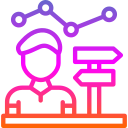Goals, Feedback, and Progress You Can See
Anchor mentorship to two or three concrete outcomes, like a portfolio update, a promotion milestone, or shipping a demo. Tie goals to deadlines and artifacts, so progress remains visible and motivating.
Goals, Feedback, and Progress You Can See
Combine async reflections with brief live coaching. Use prompts like “What changed since last week?” and “Where do you feel stuck?” Short cycles generate learning faster than long, infrequent review sessions.
Goals, Feedback, and Progress You Can See
Highlight small wins in a community channel—completed drafts, first user interviews, or successful presentations. Recognition fuels persistence and signals that the mentorship program genuinely advances real work.
Goals, Feedback, and Progress You Can See
Lorem ipsum dolor sit amet, consectetur adipiscing elit. Ut elit tellus, luctus nec ullamcorper mattis, pulvinar dapibus leo.



